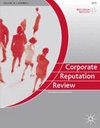我是如何看待自己的
IF 1.6
Q3 BUSINESS
引用次数: 0
摘要
本章介绍了声誉作为一种社会自我的概念,它是指导行为的第二个自我,有时甚至会违背利益。它分析了社会自我管理作为一种基本的社会和认知能力的功能。所有人都有两个自我,两个自我。这些平行且可区分的身份构成了人们的身份,并深刻地影响着他们的行为。一个是主观性,包括本体感受体验,即身体上的物理感觉。另一个是声誉,它反映了人们的自我,构成了社会身份,并使他们如何看待自己成为自我意识的一部分。20世纪初,美国社会学家查尔斯·霍顿·库利将第二自我称为“镜子自我”。这第二个自我是由多个方面编织而成的,包括人们如何看待周围的人对他们的看法和评价。本文章由计算机程序翻译,如有差异,请以英文原文为准。
How I See Myself Seen
This chapter introduces the idea of reputation as a social ego, a second self that guides actions sometimes even against interests. It analyzes the functioning of the management of social self as a fundamental social and cognitive competence. All people have two egos, two selves. These parallel and distinguishable identities make up who people are and profoundly affect how they behave. One is subjectivity, consisting of proprioceptive experiences, the physical sensations registered in the body. The other is reputation, a reflection of people's selves that constitutes social identity and makes how they see themselves seen integral to self-awareness. At the beginning of the twentieth century, American sociologist Charles Horton Cooley called the second ego the “looking-glass self.” This second ego is woven over time from multiple strands, incorporating how people think others around them perceive and judge them.
求助全文
通过发布文献求助,成功后即可免费获取论文全文。
去求助
来源期刊
CiteScore
3.80
自引率
5.30%
发文量
19
期刊介绍:
Corporate Reputation Review is the leading international journal for all scholars and academics concerned with managing and measuring corporate reputation.The Journal is reviewed by a distinguished editorial board, under the guidance of Guido Berens (Erasmus University, The Netherlands). Corporate Reputation Review provides a forum for rigorous, practically relevant academic research into reputations and reputation management, as well as related concepts such as identity and corporate communication.

 求助内容:
求助内容: 应助结果提醒方式:
应助结果提醒方式:


